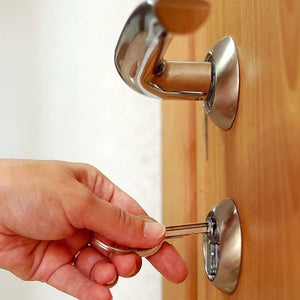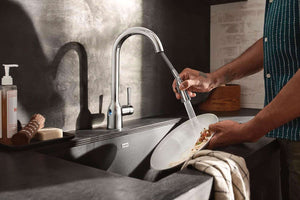
A Complete Guide to Antique Skeleton Key For Old Locks
In the age of modern security systems and electronic locks, there's a certain charm in the nostalgia associated with old-fashioned antique keys and locks. One such enchanting relic from the past is the skeleton key lock – a timeless piece that has unlocked doors and skeleton key doors to history.
Skeleton keys, also known as master keys, have a long history of being used to unlock various types of skeleton key and lock. In this article, we will delve into the purpose and characteristics of antique keys, how they work, and provide instructions on how to use them effectively. So, if you have an old lock or mortise lock that requires antique skeleton keys or are simply curious about this intriguing concept, read on to learn more!
What Is A Skeleton Key?The term "skeleton key" may spark curiosity and imagination. These keys earned their unique name because of their simplified design, featuring a long, slender shank and a minimal number of teeth. Unlike modern keys tailored for specific locks, skeleton keys possessed a universal charm – capable of opening various locks.

A skeleton key is a type of old fashioned key that is designed to open multiple locks within a specific system. It is called a skeleton key lock because its blade is usually stripped down, leaving only the essential parts necessary for the key to function. These antique keys were commonly used in older buildings, where multiple locks needed to be accessed by a single key.
How Do Skeleton Keys Work?Skeleton keys are fascinating tools used for centuries to unlock various locks. But how do they work? Well, the secret lies in their unique design and construction. Skeleton keys are typically made with a long, slender shaft and a simple yet intricate bit. When the key is inserted into the lock, these pins align with the gaps on the bit, allowing it to turn freely. The bit of the skeleton key lock acts as a master old fashioned key, pushing the pins to the correct height and allowing the lock to be opened.
Modern locks have more complex mechanisms and are designed to be more secure. Skeleton keys are primarily used for older, antique locks with simpler designs. So, the next time you come across a skeleton key, take a moment to appreciate its ingenuity and the history it represents. They may be relics of the past, but they still hold a certain charm and charisma.
Can Skeleton Keys Work On Any Lock?Skeleton keys are designed to open various locks, particularly older ones, with simple mechanisms. However, they may only work on some types of locks. Modern locks, especially those with complex tools or advanced security features, are generally resistant to antique keys. It is always best to use the appropriate key explicitly designed for the lock you are trying to open.
How To Use A Skeleton Key?Using a skeleton old fashioned key is relatively simple and can be a valuable tool for unlocking various locks. Here's a step-by-step guide on how to use a skeleton key:
- Determine if the lock you are trying to open is suitable for a skeleton key. Antique skeleton keys are most commonly used for old-fashioned warded locks or lever locks.
- Insert the skeleton key into the keyhole of the lock. Make sure the key is fully inserted and aligned correctly.
- Gently turn the key in a clockwise direction. Apply gentle pressure while depending on the lock's mechanism.
- As you turn the key, pay attention to any resistance you feel. If the key reaches a point where it feels stuck or encounters significant resistance, try adjusting the angle slightly and continue turning.
- If the lock has a lever mechanism, you may need to apply light pressure on the key while turning it to help lift the levers into the correct position. Experiment with the amount of pressure until you find the right balance.
- After turning the key, gently try to turn the doorknob or handle to see if the lock has been successfully opened. If not, repeat the process, making slight adjustments as necessary.
It's important to note that skeleton keys may only work on some locks, especially modern ones with complex mechanisms or security features. Additionally, always ensure you have permission to use a skeleton key lock before opening any locked skeleton key door or objects.
ConclusionSkeleton keys are a fascinating piece of history that allows access to a range of old locks. Understanding how they work and using them correctly can be a handy skill. However, it's important to note that skeleton keys may only work on some locks, especially modern ones with advanced security features. If you have an old lock that requires a skeleton key, following the instructions will help you unlock it successfully. So, next time you come across an old lock, try using a and experience the thrill of opening the past!



